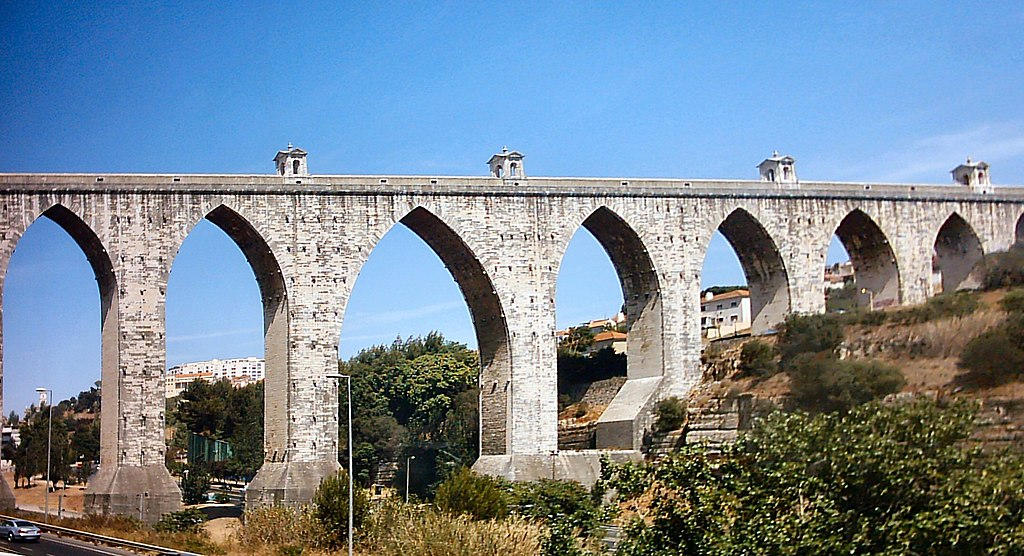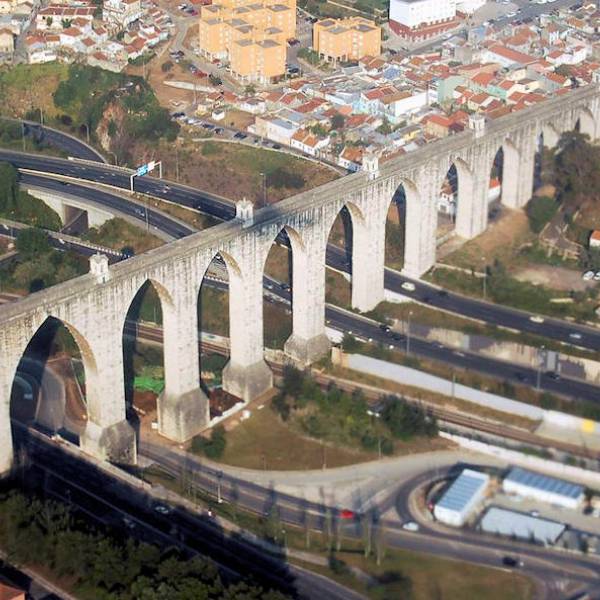The following year, in 1729, three notable figures were appointed to develop the construction plan for the aqueduct, including the monumental section that would span the Alcântara Valley. These individuals were António Canevari, an esteemed Italian architect, Colonel Engineer Manuel da Maia, a skilled Portuguese engineer, and João Frederico Ludovice, a renowned German architect who had also played a crucial role in designing the majestic Convent of Mafra.
In 1731, under the decree of King John (João) V, the Royal Charter was issued, officially marking the initiation of the aqueduct project. However, Canevari's tenure as the project's director was short-lived, and he was subsequently replaced by Manuel da Maia. With da Maia's guidance, the aqueduct's route was carefully planned, extending from the water source to the heart of the city. The envisioned system would culminate in an awe-inspiring "chalice", from which multiple conduits would branch out to supply water to the numerous fountains and public areas throughout Lisbon.
The construction of such a monumental undertaking was not without its challenges. Despite the Royal Charter's authority, progress was initially slow. Five years had passed, and the construction had yet to commence. It was only in 1740 that the most distinguished and visually captivating section of the aqueduct began to take shape. This phase included the construction of the renowned Arco Grande, a colossal arch that would become an emblem of the aqueduct's magnificence.
Tragically, Custódio Vieira, who had assumed responsibility for the project, passed away in 1744. Carlos Mardel, a Hungarian architect who would later play a pivotal role in the reconstruction of Lisbon's Baixa Pombalina after the devastating 1755 earthquake, took over as the project's leader. Mardel faced significant challenges and critical decisions. One such decision was the location of the Mãe d'Água (Mother of Water) reservoir, which would serve as a central distribution point within the city. Instead of adhering to the initial proposal of situating it in S. Pedro de Alcântara, Mardel chose a different site near Rato, in the Amoreiras area. This decision sparked debates and criticisms, particularly from Ludovice, who advocated for the "chalice" to be constructed at its originally intended location. Nevertheless, Mardel's vision prevailed, and the construction continued.
Lisbon.vip Recommends
The Águas Livres Aqueduct not only served a practical purpose but also left an indelible mark on Lisbon's urban landscape. Its striking presence and architectural magnificence continue to captivate visitors, offering a tangible connection to the city's rich history. The aqueduct became an integral part of Lisbon's heritage, a symbol of resilience and determination in the face of adversity.
Today, the Águas Livres Aqueduct stands tall as a beloved icon, attracting locals and tourists who marvel at its beauty and appreciate its historical significance. It serves as a reminder of the ingenuity of those who came before us, who dedicated their skills, resources, and efforts to solve pressing societal challenges. The aqueduct stands as a testament to Lisbon's commitment to sustainable water management, honoring the past while ensuring a prosperous future for generations to come.
Visiting the Águas Livres Aqueduct is not merely an encounter with a remarkable architectural masterpiece; it is an opportunity to immerse oneself in the history, culture, and spirit of Lisbon. As one gazes upon its grand arches and contemplates the ingenuity required to realize such a feat, it becomes evident that the Águas Livres Aqueduct is not merely an engineering marvel; it is a testament to human resilience and the power of collaboration.





